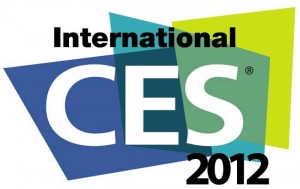
We are definitely in the communication age.
The 2012 Consumer Electronics Show took place January 10-13, and it helped reinforce the continuation of a hard trend that has been growing for a while now. Back in 1993 I predicted that we’d soon be shifting from the information age to the communication age. Informing is one-way, it’s static, and it doesn’t always cause action. Communicating is two-way, it’s dynamic, it’s engaging, and it causes action.
One way to tell which age we’re in is to look at our devices. Years ago we had things like the Apple Newton and the Palm. They were basic organizers with a calendar and address book—information age devices. At the time I commented, “When that thing becomes a phone, we’ll be entering the communication age.” Today we have that plus so much more.
First, we have social media, which is more about the word “social” than the word “media.” Because it’s social, it’s two way and communicative. And with social media, you get some powerful things that businesses like, primarily engagement and action. (And of course, people like being social too.)
Also, we like to create, connect, interact, and share. And at the 2012 CES, we saw devices that are allowing consumers to not just be passive receivers, as they have in the past, but that are taking hold of the ability to create, connect, interact, and share. Anything that involves the ability to create, connect, interact, or share is powerful.
Here’s a simple example: Social media is a tool that’s being embedded into many things. So I can take a picture with my smart phone and post that picture to my Facebook page immediately. Using GPS, the smart phone knows where I am when I take this picture and it can link that information to the photo. Additionally, I can change the picture if I want to and make it look like a cartoon or erase something from the background. Now I’m creating, connecting, and interacting with the technology. And, more important, I’m sharing it, which is where the real communication comes in.
Here’s another, more complex, example: Suppose you have friends in New York, California, and Kansas, and you’ve all decided to lose weight together. You can have running shoes that have a chip in them. That chip is connected to your smart phone and keeps track of how much you’ve run. But that’s not all. You can also instantly share the information about your running progress with your friends who you are exercising with virtually. You can post updates and pictures and cheer each other on.
At CES, we saw that companies that are not allowing for the creating, connecting, interacting, and sharing, what I call the “communication age elements,” are the ones that are not doing well. Conversely, the ones that integrate those things and allow people to do them easily are the ones that are thriving.
Which of those two categories is your company in?
Daniel Burrus






Comments